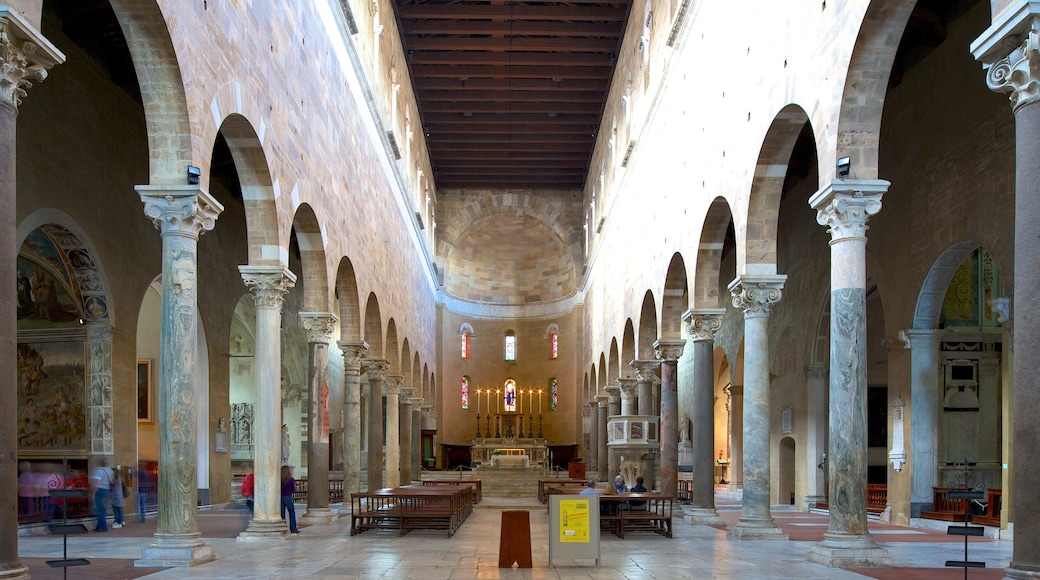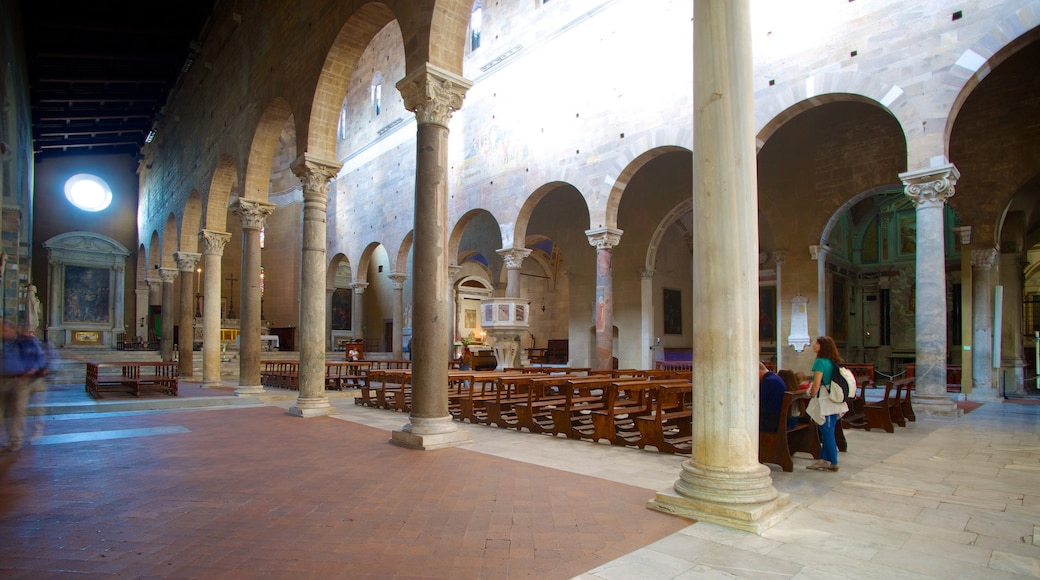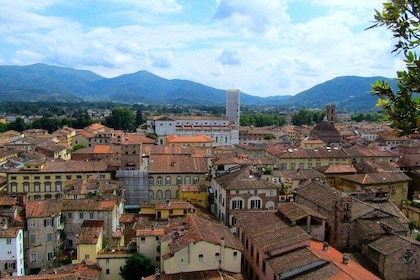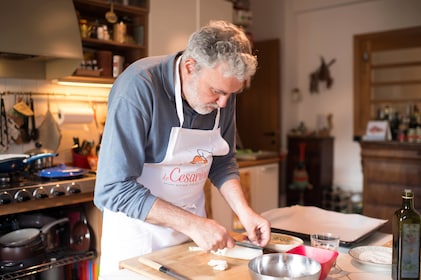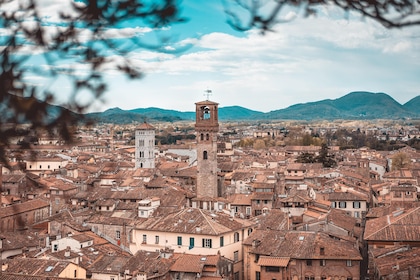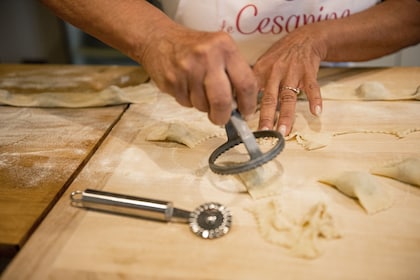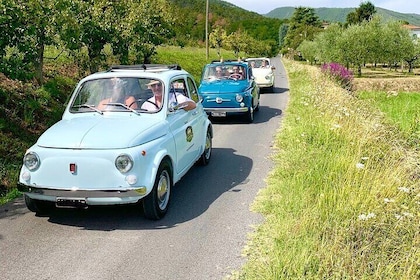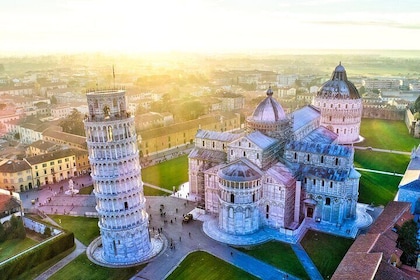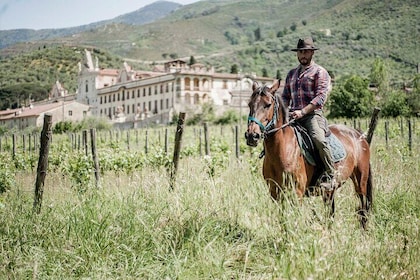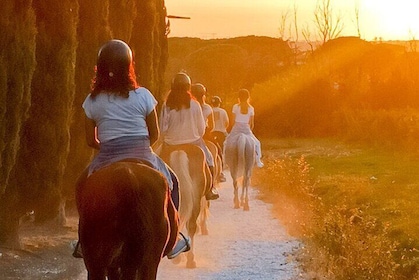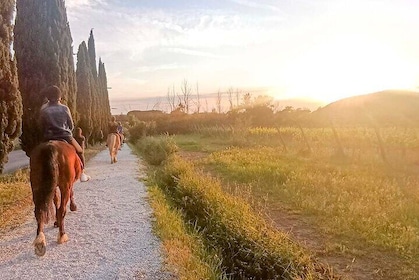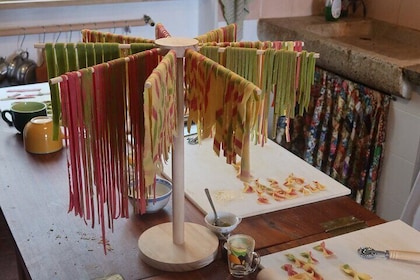The first thing that attracts your attention is the gold Byzantine-style mosaic at the top of the wide facade. The decorative piece represents the Ascension of Christ, below which are depictions of the 12 apostles. Inside the Basilica di San Frediano the views are just as arresting, with several notable works of art and the mummified body of a saint.
Basilica di San Frediano is named after Fridianus, a sixth-century Irish bishop who built the first church on this site. The current structure dates from the middle of the 12th century.
Your admiration of the art inside the basilica starts as soon as you walk in the main entrance. Near the door is a large baptismal font from the 12th century. Study the carved figures on the circular basin that tell the story of Moses.
Walk down the right aisle of the church to the side chapel of St. Zita, an important religious figure in Lucca. Her mummified body is displayed in a glass cabinet you can see her face and hands through the glass. When her body was exhumed in 1580 it was found to be intact, barely touched by the effects of decomposition. Learn more about her by observing the 16th- and 17th-century canvasses on the walls of the chapel that depict episodes from her life.
Appreciate the well-preserved old frescoes on the walls, columns and inside the basilica’s chapels. Among the highlights are the 16th-century paintings by Renaissance artist Amico Aspertini on the ceiling of the Chapel of the Cross. They show God surrounded by angels and prophets. Another standout artistic feature is the carved altarpiece at the Trenta chapel that depicts the Madonna with Child.
You can enter the church to survey its art treasures at no cost and see St. Zita’s body on any day of the week from April through mid-November. The Basilica di San Frediano is situated in the Piazza San Frediani at the end of Via Fillungo, Lucca’s main street.

